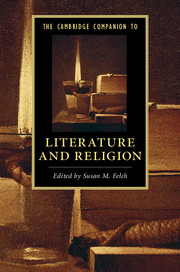Book contents
- Frontmatter
- Epigraph
- Contents
- Notes on Contributors
- Chronology of Religious Founders and Texts
- Introduction
- PART I READING PRACTICES
- PART II INTERSECTIONS
- PART III TRADITIONS
- 9 Hinduism
- 10 Buddhism
- 11 Judaism
- 12 Eastern Orthodoxy
- 13 Roman Catholicism
- 14 Islam
- 15 Protestantism
- 16 World Christianity
- Select Bibliography
- Index
- Miscellaneous Endmatter
9 - Hinduism
from PART III - TRADITIONS
Published online by Cambridge University Press: 05 September 2016
- Frontmatter
- Epigraph
- Contents
- Notes on Contributors
- Chronology of Religious Founders and Texts
- Introduction
- PART I READING PRACTICES
- PART II INTERSECTIONS
- PART III TRADITIONS
- 9 Hinduism
- 10 Buddhism
- 11 Judaism
- 12 Eastern Orthodoxy
- 13 Roman Catholicism
- 14 Islam
- 15 Protestantism
- 16 World Christianity
- Select Bibliography
- Index
- Miscellaneous Endmatter
Summary
The Western reader who sits down to read the literary works most Hindus would identify as classics is often in for a surprise, especially about the way in which religious and theological discourse cohabits with aesthetic expression and popular piety in these texts. In the Hindu context the interaction between religion and literature is usually assumed to be benign and often symbiotic: literary expression reflects religious texts and values and religious specialists welcome the support of literary expression. In the Judeo-Christian world, by contrast, there is an inherent tension between religion – or more precisely revelation – and poetics: theologians and clergymen have often cast a nervous eye on the arts, and artists and writers find they must defy the clerics and their orthodoxies to express themselves fully. Blasphemy – or at least transgression – acts as a kind of strange attractor for Western artists, and it is often a major source of the energy that drives their choices of form, genre, and trope. It is not so in the canonical works of Hinduism: the Mahabharata (and its embedded lyrical drama, the Bhagavad Gita), the Ramayana, and the play Shakuntala to name only the most revered.
Before attempting to sketch the aesthetic and theological issues at stake in this difference, it is probably wise to canvas briefly the vexed question of the definition of Hinduism and its relationship to Sanskrit, the language in which these classics were originally written and performed. In the first place, religious studies specialists today generally like to repeat what has become a truism: that Hinduism is a relatively late and artificial portmanteau term whose frequent use is a colonial artifact under which are grouped a vast array of diverse religious views and practices. As such – or so the argument goes – Hinduism is no more than a convenient term imposed from without on phenomena that are otherwise quite disparate and cannot be addressed except on a case-by-case basis.
It is arguably the case, however, that the term “Hinduism” is nevertheless indispensable, both as a gateway to understanding and as pointing to a conceptual unity and existential stance toward life among these practices and viewpoints that most Hindus themselves assume to underlie their religious traditions.
- Type
- Chapter
- Information
- The Cambridge Companion to Literature and Religion , pp. 151 - 168Publisher: Cambridge University PressPrint publication year: 2016

